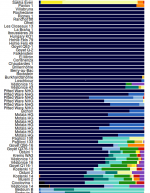bicicleur 2
Regular Member
- Messages
- 6,367
- Reaction score
- 1,401
- Points
- 113
Afaik it was more like a family. Population is the wrong word perhaps, but then again we're talking about H&Gs.
yes, I don't think much replacement was required, and no Oase admixture remained
Aurignacians were allready at the Danube in Austria 43.5 ka, probably derived from the proto-Aurignacians further down south
http://www.aggsbach.de/2014/09/new-...of-the-classic-aurignacian-in-central-europe/
ca 42 ka they were in the Swäbische Alp, southeren Germany and ca 39.5 ka they expanded west to France and east till the Don river
a bit later they also expanded to Mediterranean Europe, where proto-Aurignacian was before




